by Syarif Hidayat*

Abdullah bin Abdulaziz
Al Saud (1 August 2005-23 January 2015)" width="332" height="221" /> King Abdullah bin Abdulaziz Al Saud (1 August 2005-23 January 2015)Abdullah bin Abdulaziz Al Saud (Arabic: عبدالله بن عبدالعزيز آل سعود, ‘Abd Allāh ibn ‘Abd al-‘Azīz Āl Sa‘ūd, Najdi Arabic pronunciation: [ʢæbˈdɑɫ.ɫɐ ben ˈʢæbdæl ʢæˈziːz ʔæːl sæˈʢuːd]; 1 August 1924 – 23 January 2015) was the King of Saudi Arabia and Custodian of the Two Holy Mosques from 2005 to 2015. He ascended to the throne on 1 August 2005 upon the death of his half-brother, King Fahd bin Abdulaziz. I met King Fahd in 1983. At that time, I was very happy as a young Indonesian journalist from ANTARA News Agency who got a chance to be invited by one of the powerful Saudi Kings. Alhamdulillah, I and my colleagues from TVRI (Indonesian State Television) and RRI (Indonesian State Radio) were invited to perform hajj pilgrimage at the expenses of the Kingdom of Saudi Arabia Government and accorded with the royal facilities during 1983 hajj pilgrimage season. I was also invited to visit Saudi royal palaces in Jeddah, Mecca and Mina, Saudi Arabia. Since that time I was interested to know more about Al-Saud dynasty.
Back to Abdullah bin Abdulaziz, according to Forbes, in 2013, he was also among the world’s most powerful people, and was ranked 8th globally. Abdullah was born on 1 August 1924 in Riyadh. He was the tenth son of King Abdulaziz. His mother, Fahda bint Asi Al Shuraim, was a member of the Al Rashid dynasty, longtime rivals of the Al Saud dynasty. She was descended from the powerful Shammar tribe and was the daughter of former Shammar tribe chief Asi Shuraim. She died when Abdullah was six. He had younger full-sisters. Madawi Al-Rasheed, a Saudi-Arabian-born professor of social anthropology at the department of Theology and Religious Studies in King’s College London since 199, argues that his maternal roots and his experience of an early speech impediment led to delay in his rise to higher status among the other sons of King Abdulaziz.
Abdullah, like Fahd, was one of the many sons of Ibn Saud, the founder of modern Saudi Arabia. Abdullah held important political posts throughout most of his adult life. In 1961 he became mayor of Mecca, his first public office. And, in 1962, he was appointed commander of the Saudi Arabian National Guard, a post he was still holding when he became king. He also served as deputy defense minister and was named crown prince when Fahd took the throne in 1982. After King Fahd suffered a serious stroke in 1995, Abdullah became the de facto ruler of Saudi Arabia until ascending the throne a decade later.
Also Read: Palestine Solidarity Month: A Collective Movement for Al-Aqsa and Palestine’s Freedom
During his reign he maintained close relations with United States and Britain and bought billions of dollars worth of defense equipment from both states. He also gave women the right to vote and to compete in the Olympics. Furthermore, Abdullah maintained the status quo during the waves of protest in the kingdom during the Arab Spring. In November 2013, a BBC report claimed that Saudi Arabia could obtain nuclear weapons at will from Pakistan due to a longstanding relationship.
The King outlived two of his crown princes. Conservative Interior Minister Nayef bin Abdul-Aziz Al Saud was named heir to the throne on the death of Sultan bin Abdulaziz in October 2011, but Nayef himself died in June 2012. Abdullah then named the 76-year-old defense minister, Salman bin Abdulaziz Al Saud, as crown prince. According various reports, Abdullah married about 30 times, and had more than 35 children. The king had a personal fortune estimated at US$18 billion, making him the third wealthiest head of state in the world. He died on 23 January 2015, aged 90, three weeks after being hospitalized for pneumonia.

Abdullah bin Abdulaziz
was buried in unmarked grave at the El-Ud public cemetery in Riyadh." width="334" height="188" /> King Abdullah bin Abdulaziz was buried in unmarked grave at the El-Ud public cemetery in Riyadh.[Photo: Aljazeera]Saudi Arabia’s King Abdullah bin Abdulaziz was buried in unmarked grave, in common with his predecessor, as new ruler pledges no change in kingdom’s direction. The King has been buried at the El-Ud public cemetery in Riyadh. Earlier on Friday, January 23, 2015, Turkish President Recep Tayyip Erdogan, Pakistani Prime Minister Nawaz Sharif, Sudanese President Omar Hassan al-Bashir and Egypt’s Prime Minister Ibrahim Mehleb joined the leaders of Gulf Arab states for the funeral prayer at the Imam Turki bin Abdullah mosque.
Also Read: Hassan al-Turabi: A Controversial Thinker from Sudan
Bahrain’s King Hamad Bin Isa Al-Khalifa, Qatari Emir Sheikh Tamim Bin Hamad Al-Thani, a high-level delegation from the United Arab Emirates and Kuwait’s Emir Sheikh Sabah Al-Ahmad Al-Sabah were at the funeral, state television showed on Friday. Earlier, a royal court statement said that the king, believed to be around 90, had died at 1:00am local time (22:00 GMT), expressing its “great sadness and mourning”. The officials did not disclose the cause of King Abdullah’s death, but he was admitted to hospital in December suffering from pneumonia and had been breathing with the aid of a tube.
In keeping with the kingdom’s traditions, the king was buried in an unmarked grave as was his predecessor King Fahd, who died in 2005.
Al Jazeera’s Hashem Ahelbarra said: “This is someone who is definitely going to be remembered as a reformist within the royal family. “He succeeded his brother at a very delicate time and started reforms in the country.”

New Saudi King Salman makes top appointments and vows to walk the kingdom’s straight path as King Abdullah is buried. (Photo: Aljazeera)
Crown Prince Salman bin Abdulaziz al-Saud, the deceased king’s half-brother, has officially been named as the next ruler of the world’s top oil exporter and the spiritual home of Islam. Saudi Arabia’s Western and Arab allies, along with countries such as Israel and China, offered their condolences on the death of the king.
Also Read: Who Exactly is the RSF Group Shaking Sudan?
King Salman, 79, in his first public address, pledged no change in the kingdom’s direction and called for unity among Muslims. “We will remain with God’s strength attached to the straight path that this state has walked since its establishment by King Abdul Aziz bin al-Saud, and by his sons after him,” Salman said his in televised remarks.
Prince Muqrin Bin Abdulaziz has been announced as the new crown prince, state TV announced. The new king also appointed his nephew Mohammed bin Nayef as deputy crown prince, meaning he will be the first person of the next generation to rule the kingdom one day. Prince Mohammed, who remains as interior minister, according to the royal decree carried on state television, is next in line to rule after Salman and Crown Prince Muqrin.

Saudi Arabia
is part of King Abdullah's legacy," said President Barack Obama. (File Photo)" width="364" height="205" /> “The closeness and strength of the partnership between the United State and Saudi Arabia is part of King Abdullah’s legacy,” said President Barack Obama. (File Photo)Obama condolences
US President Barack Obama offered his condolences on King Abdullah’s death. “As our countries worked together to confront many challenges, I always valued King Abdullah’s perspective and appreciated our genuine and warm friendship,” Obama said in a written statement. “The closeness and strength of the partnership between our two countries is part of King Abdullah’s legacy.”
Also Read: The Two-State Solution (Palestine–Israel) in Historical Perspective
At stake with the appointment of Salman as king is the future direction of the US’ most important Arab ally and self-appointed champion of Sunni Islam at a moment of unprecedented turmoil across the Middle East.
Most recently, the kingdom joined the US-led coalition carrying out air strikes against the Islamic State of Iraq and the Levant. King Abdullah played a guiding role in Saudi Arabia’s support for Egypt’s government after the military intervened in 2013, and drove his country’s support for Syria’s rebellion against President Bashar al-Assad. King Salman has been crown prince since 2012 and has been heading the defence ministry since 2011. He was governor of Riyadh province for five decades before that.
Abdullah ushered in modern era
King Abdullah officially ascended to the throne in 2005. But he actually had ruled since 1995, when his predecessor and half brother, King Fahd, suffered an incapacitating stroke. Abdullah is believed to have been born in Riyadh in 1924 to an ultra-conservative family in which the traditions and hospitality of Islam were always stressed.
Also Read: Enchanted by K-Dramas, Dragged into Slander: Time for Muslims to Rise!
As he grew into adulthood, oil was discovered in the Saudi desert and the country grew into the world’s top oil exporter, bringing vast wealth to royal family. Upon taking control, Abdullah began unprecedented moves to modernize the conservative kingdom. Women were given a voice in politics. This year, for the first time, they’ll be allowed to vote in local elections.
Abdullah also established a Western-style university where students from both sexes openly mixed and shared classes. Previously banned music could be heard on Saudi television and radio.
Foreign policy maverick
Abdullah was something of a maverick in his foreign policy. He proposed a peace deal in which Arab League states would recognize Israel if the Palestinians get their own state. In a leaked U.S. diplomatic note, the king urged the U.S. military to attack Iran and “cut off the head of the snake” to stop it from building a nuclear weapon.
Also Read: Creating Opportunity and Avoiding Misery; Lesson Learn on Waste Recycling Issue
Saudi Arabia is one of the top suppliers of arms to the rebels fighting to overthrow the Syrian government. It is a leading member of the U.S.-led coalition fighting against Islamic State in Iraq and Syria. Saudi Arabia is part of the G20 economic bloc and the World Trade Organization.
Despite reforms at home and moderation abroad, human rights groups continue to assail Saudi Arabia. They say women are still denied many basic rights. The king refused to support the Arab Spring movements that toppled dictatorships in Tunisia, Egypt, Libya and Yemen. Dissent is not tolerated, free speech is muffled, and criminals still face extreme punishment such as beheadings.
No change in Saudi oil policy
Experts believe that the death of King Abdullah will not force any significant change in Saudi Arabia’s oil policy in short term. The Saudi kingdom has been pumping oil at high levels even as prices are dropping, a strategy that has further accelerated declines in crude prices.
Also Read: Between the Treaty of Hudaybiyyah and Ceasefire in Gaza
“Things go downhill from here for us with King Abdullah’s death. The next generation and others—while they talk a good game and a lot of happy talk toward the US and what they want—what they really want is a very sustainable oil price, a higher one than I think we would like and can benefit from, and will work to do that,” John Kilduff, founding partner of Again Capital, told CNBC .
Saudi Arabia is pursuing this high-production, low-price policy in order to “break the backs” of American oil producers, and possibly those in Iran and Russia, Kilduff said.
Saudi Arabia after King Abdullah
The King of Saudi Arabia, Abdullah bin Abdulaziz al-Saud, had suffered from a bout of pneumonia. Although his health has been deteriorating for a number of years, leading him to reduce his workload, the 90-year-old chain-smoking monarch retained such gravitas and influence that no matter how prepared the family is for his passing, Saudi Arabia will feel his loss acutely.
Also Read: Peace Cannot Be Achieved Without a Palestinian State
“A hugely popular figure even among those Saudis who do not feel strong affinity for the monarchy, he will leave a gap that most likely cannot be filled. To rule in Saudi Arabia is not just a matter of being a good manager of government and ensuring oil keeps pumping out of the ground. It is a complex and difficult task that involves managing a wide spectrum of interests and constituencies across a vast territory, many of whom directly contradict each other,” writes Michael Stephens, the deputy director of the Royal United Services Institute, Qatar.
Changing slowly
In his article titled “Saudi Arabia after King Abdullah” published in Aljazeera, Michael Stephens says Saudis often talk of change having to occur slowly, this is not just an excuse to bat away those pushing for reform, it is a genuine reflection of the need to balance the competing interests and constituencies in the country. All of whom must be placated in order for Saudi Arabia to progress forward stably. Understanding this balance is what Abdullah was particularly good at – even in his older years, his knowledge of his own people was remarkably astute.
A man who knew reforms for women’s participation must come, he ruthlessly removed conservative clerics who stood in his way, all the while ensuring not to undermine the institution of the clerical establishment and the religious police, whom many conservative Saudis hold in great esteem.
Likewise, with the kingdom’s restive Shia population, the king and his half-brother and former Crown Prince Nayef pursued a policy of dialogue-led engagement and force.
Also Read: Facing the Wall: Netanyahu and Ambitions Built on Blood
In November 2014, the Saudi state was quick to act against an al-Qaeda affiliated group that had launched attacks on a Shia Hussainiyah, a religious building, in Saudi’s Eastern Province. Although tensions between the state and its Shia population remain high, it was an encouraging sign.
At times the king has cut a lonely figure – never fully connected to his half brothers. His rise to power was as much due to force of personality and guile, resisting attempts to emasculate his position as Commander of the National Guard, as it was his abilities in politics.
It was often his sheer force of personality that ensured large modernisation projects, such as King Abdullah University of Science and Technology, or the instigation of a number of economic cities were pushed forward.
Old versus young
On issues of foreign policy the older generation of princes tend to be cut from similar cloth, Iran is perennially viewed with suspicion, and its desire to expand at the expense of Saudi interests is almost a given. With or without Abdullah, the Saudi position vis-a-vis Tehran will not soften, because the underlying assumptions which govern the bi-lateral relationship have not changed in decades.
Also Read: Taaruf of the Construction World: Lessons from the Collapse of Al Khoziny’s Prayer Hall
Likewise, despite friction with the United States on a number of issues ranging from clandestine talks with Iran, to the failure to make peace between Israel and Palestine, the kingdom will have to maintain its ties come what may, and no matter who leads either country. The soured relationship at present is far more a product of circumstance than it is any particular personality clash between US President Barack Obama and the Saudi king.
As such, Abdullah’s departure from the scene is unlikely to radically alter the way that the kingdom sees its position in the region, and indeed the world. Riyadh’s elites have had to come to terms with the thing they fear most – instability – becoming a permanent feature of their neighbourhood. It is unsettling and has moved the country towards a more aggressive activist posture; something which Saudi Arabia has always been hesitant to do.
Nevertheless, be it in the realm of military interventions in Bahrain or Yemen, or playing around with oil prices to defend market share and hurt regional competitors, the kingdom is flexing its muscles in a way that has not been seen since the days of King Faisal.
ISIL poses difficult conundrum
The Islamic State of Iraq and the Levant (ISIL), however, poses a particularly difficult conundrum. It seeks to undermine the most fundamental pillar upon which the al-Saud’s rule rests; its Islamic legitimacy to govern the land of the prophet and act as the custodian of the two holy mosques.
That the kingdom is not safe from ISIL’s retribution was illustrated on January 5, when two Saudi border guards along with their commander were killed in a combined suicide and shooting attack that bore all the hallmarks of al-Qaeda-ISIL backing.
It is clear that for the al-Saud, there can be no compromise in dealing with the organisation until they are destroyed. This is an uncomfortable policy for the ruling house, who must manage the tension between taking on an entity which seeks to unseat it, while also understanding that sympathy for ISIL among Saudi’s citizenry is not uncommon.
The fact, for instance, that ISIL is said to be using adapted versions of Saudi text books in its schools, and much of its hardline anti-Shia outlook is stirred by firebrand clerics in the kingdom illustrates the complexity of the relationship between the kingdom and would-be caliphate.
Steering role
Lastly, in its relations with the GCC, the kingdom has always maintained an overbearing role, which is largely why the smaller Gulf countries with the exception of Bahrain, eschew further integration with it. Demography and geography ensure that Saudi will still play this role in its own neighbourhood, largely steering the GCC towards a hawkish line on Iran, while attempting to collectivise security, economy and foreign policy postures.
But with regard to bringing Qatar back into the fold, it has been Abdullah, in particular, that has pushed forward the agenda. Without Abdullah, the possibility of fully mending intra-GCC ties, for example by brokering a reconciliation between Qatar and the Sisi government in Egypt, hangs more finely in the balance. Can Saudi Arabia manage the turbulent changes in the region without its king? Yes, of course, the family have plenty of capable princes, well-educated thinkers and capable technocrats. As such the kingdom’s new-found assertiveness is unlikely to end. While the region is unstable, Saudi Arabia will be looking to see in what ways it can assert its own interests.
Domestically the recent influx of a number of younger princes into the cabinet, which Abdullah has personally overseen, has gone some way to alleviating the concerns of many Saudis that vacuums of governance will open up as the older generation of princes relinquish their grip on power.
What the kingdom loses however is a figurehead that is close to irreplaceable. There are certain intangible qualities that make a statesman; strength, cunning, fearlessness, and a deep understanding of your own domestic political scene, all of which Abdullah bin Abdulaziz possessed in abundance. Saudi Arabia without his leadership will still be a great power in the region, if not the great power in the region, but it will not be the same without him, concludes Michael Stephens.
The House of Saud
The House of Saud (Arabic: آل سعود Āl Saʻūd) is the ruling royal family of Saudi Arabia. The family has thousands of members. It is composed of the descendants of Muhammad bin Saud and his brothers, though the ruling faction of the family is primarily led by the descendants of Abdulaziz Ibn Saud. The most influential member of the Royal family is the King of Saudi Arabia. The throne was designed to pass from one son of the first king, Ibn Saud, to another. His deputy Muqrin bin Abdulaziz Al Saud is also from the ruling House of Saud, and the king-appointed cabinet includes more members of the royal family. While the monarchy is hereditary now, future Saudi kings will be chosen by a committee of Saudi princes, in line with a 2006 Royal Decree.
The family is estimated to be composed of 15,000 members, but the majority of the power and wealth is possessed by a group of only about 2,000. The House of Saud has gone through three phases: the First Saudi State, the Second Saudi State, and the modern nation of Saudi Arabia. The First Saudi State marked the expansion of Wahhabism. The Second Saudi State was marked with continuous infighting. Modern Saudi Arabia wields considerable influence in the Middle East. The family has had conflicts with the Ottoman Empire, the Sharif of Mecca, the Al Rashid family of Ha’il, and numerous Islamist groups both inside and outside Saudi Arabia.
House of Saud is a translation of Al Saud. The latter is an Arabic dynastic name formed by adding the word Al, meaning “family of” or “House of”, to the personal name of an ancestor. In the case of the Al Saud, this is the father of the dynasty’s 18th century founder, Muhammad bin Saud (Muhammad, son of Saud).
Today, the surname “Al Saud” is carried by any descendant of Muhammad bin Saud or his three brothers Farhan, Thunayyan, and Mishari. Al Saud’s other family branches are called cadet branches. Members of the cadet branches hold high and influential positions in government though they are not in line of succession to Saudi throne. Many cadet members intermarry within the Al Saud to reestablish their lineage and continue to wield influence in the government. Sons and grandsons of King Abdulaziz are referred to in the style “His Royal Highness” (HRH), differing from the royals belonging to the cadet branches which are called “His Highness” (HH).
Origins and early history
The earliest recorded ancestor of the Al Saud was Mani’ ibn Rabiah Al-Muraydi. He settled in Diriyah in 1446–1447 with his clan, the Mrudah who trace their ancestry to the Banu Hanifa branch of the Banu Bakr which descended from the large Rabi’ah branch of Adnanite tribes, a tribal confederation historically located in the Najd. Mani was invited by a relative named Ibn Dir. Ibn Dir was the ruler of a set of villages and estates that make up modern-day Riyadh. Mani’s clan had been on a sojourn in east Arabia, near al-Qatif, from an unknown point in time. Ibn Dir handed Mani two estates called al-Mulaybeed and Ghusayba. Mani and his family settled and renamed the region “al-Diriyah”, after their benefactor Ibn Dir.
The Mrudah became rulers of al-Diriyah, which prospered along the banks of Wadi Hanifa and became an important Najdi settlement. As the clan grew larger, power struggles ensued, with one branch leaving for nearby Dhruma, while another branch (the “Al Watban”) left for the town of az-Zubayr in southern Iraq. The Al Migrin became the ruling family among the Mrudah in Diriyah. Diriyah (Arabic: الدرعية), formerly romanized as Dereyeh and Dariyya, is a town in Saudi Arabia located on the northwestern outskirts of the Saudi capital, Riyadh. Diriyah was the original home of the Saudi royal family, and served as the capital of the first Saudi dynasty from 1744 to 1818. Today, the town is the seat of the Diriyah Governorate, which also includes the villages of Uyayna, Jubayla, and Al-Ammariyyah, among others, and is part of Ar Riyad Province. (T/P3/P2)
Mi’raj Islamic News Agency (MINA)
 *Senior Editor of Mi’raj Islamic News Agency (MINA) (He can be contacted via emails: [email protected] and [email protected])
*Senior Editor of Mi’raj Islamic News Agency (MINA) (He can be contacted via emails: [email protected] and [email protected])
Sources:
1. International Online Media
2.International News Agencies
3. http://en.wikipedia.org/wiki/House_of_Saud





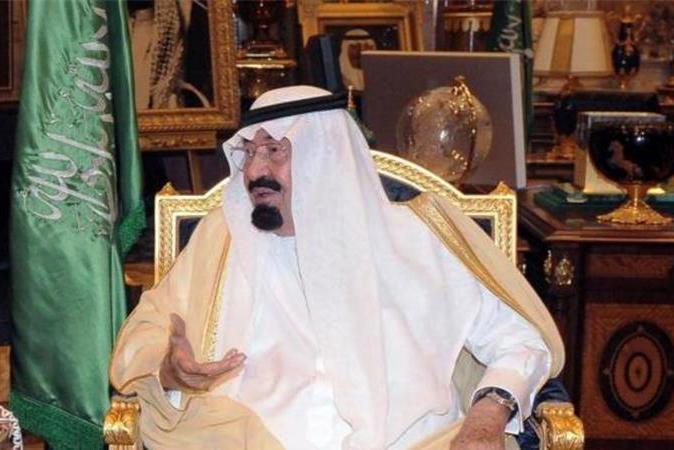



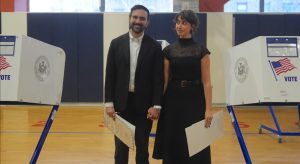
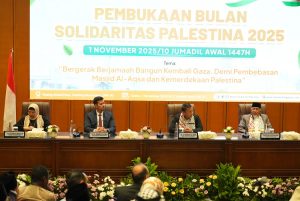
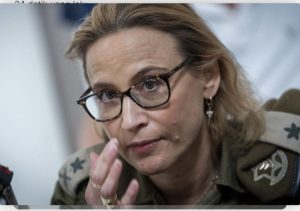
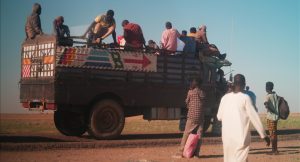
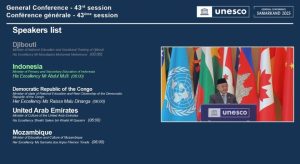
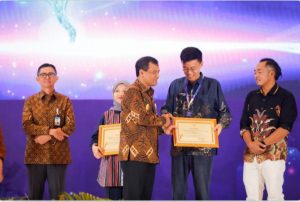
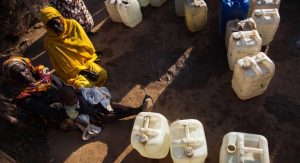

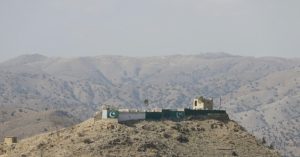
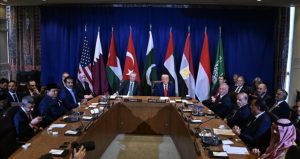
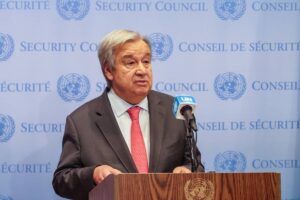
![French President Emmanuel Macron in Berlin, Germany on March 15, 2024 [Halil Sağırkaya – Anadolu Agency]](https://en.minanews.net/wp-content/uploads/2024/10/Screenshot_2024-10-22-20-57-45-59_40deb401b9ffe8e1df2f1cc5ba480b12-300x193.jpg)
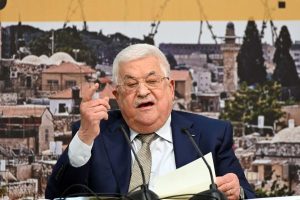




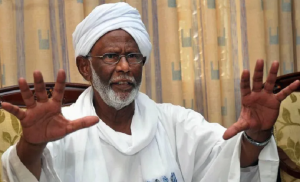
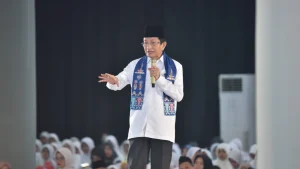





 Mina Indonesia
Mina Indonesia Mina Arabic
Mina Arabic